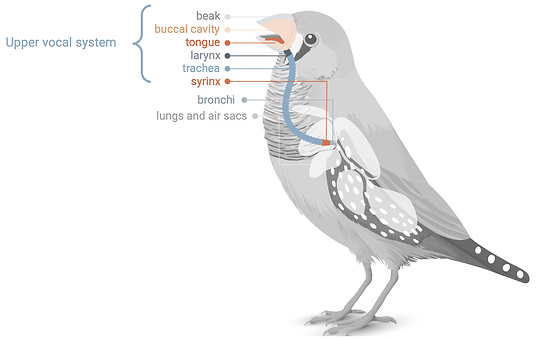Previous projects


Head motion and vocal system in birds
Supervised by Pauline Provini (MECADEV, MNHN, Paris).
To explore this, I used biplanar cineradiography and X-ray Reconstruction of Moving Morphology (XROMM) to record 15 species of cadaveric birds from 9 different orders while an operator moved the birds' cadaveric heads in different directions.
Related article:
Fournier M., Olson R., Van Wassenbergh S. & Provini P. 2024. The vocal system of bird: 3D reconstruction reveals upper vocal tube elongation during head motion. Journal of Experimental Biology, 227(23). DOI: https://doi.org/10.1242/jeb.247945
Post-cranial element of extinct mammals and locomotion
Supervised by Sandrine Ladevèze (CR2P, MNHN, Paris)
& Floréal Solé (RBINS, Brussels).
Extinct mammals of Europe are rarely known from partial or complete skeletons. As a result, their systematics and ecology are often solely based on dental characters and post-cranial remains, when available, are usually neglected. However, the post-cranial skeleton provides important information that complements the skull and teeth, particularly in reconstructing the locomotion of these animals.
Using morphological descriptions and comparative anatomy, I participated in elucidating the locomotion of various European carnivorous mammals (Carnivora and Hyaenodontidae) and mesonychids (Condylarthra).
Related articles:
Solé F., Fournier M., Le Verger K., Godinot M., Laurent Y., Smith T. & Ladevèze S. 2023. New postcranial element of the mesonychids (Mammalia) from the Ypresian of Europe: news hypotheses on the radiation and evolution of the mesonychids. Journal of Mammalian Evolution, 30(2): 371-401. DOI: 10.1007/s10914-023-09651-x
Fournier M., Ladevèze S., Le Verger K., Fischer V., Speijier R. & Solé F. 2020. On the morphology of the astragalus and calcaneus of amphicyonids (Carnivora, Mammalia) from the Paleogene of Europe; implication on the ecology of the European bear-dogs. Geodiversitas, 42(18):305-325. DOI: 10.5252/geodiversitas2020v42a18
Solé F., Fischer V., Denayer J., Speijer R.P., Fournier M., Le Verger K., Ladevèze S., Folie A. & Smith T. 2020. The upper Eocene-Oligocene carnivorous mammals from the Quercy Phosphorites (France) housed in Belgian collections. Geologica Belgica, 24(1-2). DOI: 10.20341/gb.2020.006
Skull morphology in burrowing rodents
Supervised by Helder Gomes Rodrigues (CR2P, MNHN, Paris).
Rodents show a wide range of anatomical, physiological, and behavioral adaptations to life underground. Cranial and postcranial bone morphologies are deeply impacted by the modes of digging, which can involve either incisors or claws.
To assess the degree of specialisation of fossil rodent families in relation to their respective evolution, I quantified the morphological variation of the skull and mandible in two families of subterranean rodents, the Spalacidae and the Bathyergidae.
Related article:
Fournier M., Hautier L. & Gomes Rodrigues H. 2021. Evolution towards fossoriality and morphological convergence in the skull of Spalacidae and Bathyergidae (Rodentia). Journal of Mammalian Evolution, 28(3): 979-993. DOI: 10.1007/s10914-021-09550-z

